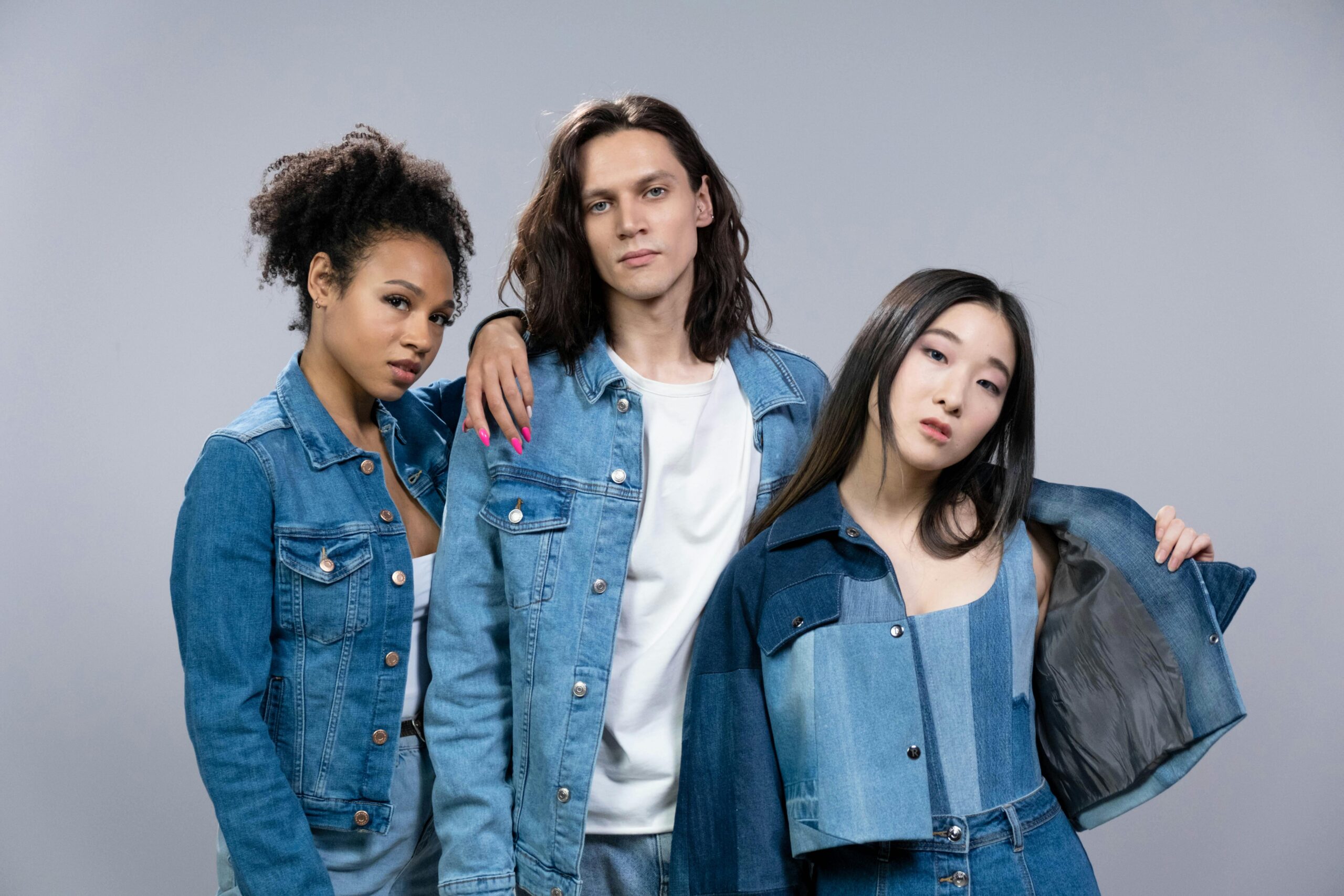An ever-evolving world of fashion calls for staying ahead of the trends. It does not only make a good individual or business but also caters to changing consumer needs and sets sustainable practices within the fashion industry. Below are actionable ways of improving fashion trends and setting new standards.
- Sustainable Practices in Fashion
Sustainability is no longer a choice in fashion; it is a must. The use of eco-friendly materials and ethical production processes can enhance brand reputation while appealing to environmentally conscious consumers.
Use Sustainable Fabrics: Use organic cotton, recycled polyester, and bamboo. These fabrics not only minimize environmental impact but also provide comfort and durability.
Reduce Waste: Use the zero-waste design and promote upcycling in collections. Brands can collaborate with recycling services to reuse worn-out clothing.
Make it Transparent: Label and market your sustainability initiatives to customers.
- Utilize Technology and Innovation
The technology of fashion has transformed a lot. This is an arena that presents so many opportunities to be able to improve trends and customers’ experiences.
Virtual and Augmented Reality: Introduce virtual try-on options to enable customers to see how clothing will look without having to physically try it on.
Artificial Intelligence: Use AI to predict fashion trends, optimize inventory management, and personalized shopping experiences.
3D Printing: This technology allows for the creation of complex designs and reduces waste in production, thus encouraging innovation in garment construction.

- Keep in Line with Consumer Preferences
Understanding and keeping in line with consumer demands is crucial in driving fashion trends.
Regular Market Research: Know about new trends and customer preferences by conducting surveys, focus groups, and analytics from social media.
Social Media Influencer: Work with those influencers who belong to your target audience to spread awareness of your collections.
Fashion Diversification: Develop styles for diverse body types, age groups, and cultural sensibilities.
- Emphasis on Ethical Practice
Ethical practices in fashion are on the rise because consumers are demanding fair labor and humane treatment in the production chain.
Fair Wages: Ensure the supply chain workers are adequately compensated and their workplaces are safe.
Ethical Sourcing: Deal with suppliers who adhere to ethical labor standards and environmentally friendly practices.
Animal Welfare: Refrain from animal-derived materials and opt for cruelty-free alternatives such as faux leather and synthetic furs.
- Emphasize Customization and Personalization
Unique, individualized fashion experiences increasingly demand customers. In a cluttered market, brands will be distinguished by personalization opportunities.
Tailor-made clothing sizes and colors can be selected or designed for customers.
L. limited-edition collections will be sold that cannot be repeated.
Interactive platform: Through online, customers collaborate on designing clothes, to engross themselves in and brand allegiance towards the brand.
- Minimalism and Versatility in sStylesMinimalist fashion focuses on quality and not on quantity. Such designs always go well since they will never be out of style.
Capsule Wardrobes: Encourage capsule wardrobe sets with diverse, replaceable items.
Durable Items: Invest in material and production quality for the ability to have longevity; attract consumers that seek value for money
Neutral Colors and Classic Fits: Implement neutral color patterns and classic styles for pieces that don’t have seasons. - Infusion of Cultural Insights
Cultural diversity-inspired fashion adds depth and uniqueness to trends.
Work with Local Artisans: Integrate traditional craftsmanship and patterns into modern designs.
Celebrate Global Styles: Draw inspiration from international fashion, blending traditional and contemporary elements.
Respect Cultural Appropriation Concerns: Ensure that cultural influences are represented respectfully and authentically.

- Invest in Digital Marketing Strategies
A robust digital presence is essential for amplifying fashion trends and reaching a global audience.
SEO: Improve your website and content to rank better on search engines, thereby driving organic traffic.
Social Media Campaigns: Utilize Instagram, TikTok, and Pinterest to display collections and engage with followers.
Email Marketing: Personalized emails to customers about new collections, sales, and fashion tips.
- Collaboration and Innovation with Industry Partners
Partnerships and collaborations within the fashion industry are likely to drive innovation and foster growth.
Co-Branded Collections: Collaborate with other brands or designers to produce innovative, trendsetting collections.
Industry Events: Attend fashion shows, expos, and sustainability forums to promote your brand and be aware of the latest trends.
Knowledge Sharing: Engage in sharing best practices and knowledge among peers to better the industry together.
- Affordable Luxury
Affordable luxury allows brands to reach a wider audience without losing that elusive air of exclusivity.
Strategic Pricing: Balance price with quality to position for the luxury as well as budget-conscious consumer.
Accessible Marketing: Position affordable luxury as aspirational but attainable using aspirational branding techniques.
Quality Assurance: Ensure these affordable products deliver high quality, so customers become valuable friends, even champions.
- Use Data Analytics for Trend Forecasts
Data can revolutionize how brands predict and set fashion trends.
Trend Analysis Tools: Monitor market data, search engine trends, and social media hashtags to track emerging styles using advanced tools.
Consumer Behavior Insights: Analyze purchase patterns, browsing history, and customer feedback to understand preferences and tailor offerings.
Predictive Analytics: Implement AI-driven predictive models to forecast future trends and stock inventory accordingly.
- Improve Retail Experiences
Creating memorable retail experiences can elevate how customers perceive your brand.
Pop-Up Shops: Open temporary shops in strategic locations to create publicity and test the market.
In-Store Technology: Incorporate touchscreens, interactive mirrors, and smart interactive displays to get the attention of customers as well as enrich their shopping experience.
Loyalty Program for Customers: Reward loyal customers with discounts or special access.
- Promote Gender-Neutral Fashion
Gender-neutral fashion is one of the big trends that helps break a lot of those old molds in fashion.
Universal Silhouettes: Design pieces with clean, versatile lines that suit all genders.
Neutral Colors and Patterns: Use inclusive palettes and minimalist designs to appeal to a wide audience.
Champion Equality: Build marketing campaigns that highlight inclusivity and representation.

- Activewear and Athleisure
The demand for versatile, comfortable clothing has fueled the popularity of activewear and athleisure.
Innovative Fabrics: Develop moisture-wicking, breathable materials that cater to both performance and style.
Cross-Functional Designs: Design clothes that fit the gym, casual walks, and even the office.
Collaborations with Celebrities: Partner with athletes and influencers to help promote your activewear lines. - Educate Consumers About Fashion Choices
Educating consumers will encourage them to make informed choices and be loyal to your brand.
Sustainability Campaigns: Create awareness and educate consumers on the advantages of choosing sustainable and ethically sourced fashion.
Style Guides: Give them a tutorial on how to style their product and thus, induce more buying.
Behind-the-Scenes Content: Allow the consumers into your design and production processes. That way, there is bound to be some sort of trust and transparency. - Supply Chain Operations Optimization
Effective supply chains save costs minimize delays and even reduce defects. This impacts directly on fashion trends.
Local Manufacturing: Source and manufacture locally, saving transportation costs and carbon emissions.
Real-Time Tracking: Leverage digital tools to track inventory levels and order fulfillment processes.
Flexible Production Models: Adopt on-demand manufacturing to avoid overproduction and respond rapidly to changes in the market. - Redefine Traditional Marketing with Influencer Power
Influencer marketing is one of the most effective means of reaching new audiences and spreading trends.
Micro-Influencers: Partner with smaller influencers who have strong, niche followings to ensure authentic promotion.
Content Variety: Encourage influencers to create a mix of photos, videos, and live streams showcasing your products.
Affiliate Programs: Offer influencers incentives like commission-based earnings to amplify your reach. - Invest in Eco-Friendly Packaging
Sustainable packaging enhances your brand’s appeal and complements eco-conscious fashion efforts.
Biodegradable Materials: Use packaging made from materials like recycled paper or plant-based plastics.
Reusable Packaging: Offer innovative solutions such as reusable garment bags to reduce waste.
Sustainable Design: Useana is a minimalist design that speaks to sustainability and minimizes the use of materials.
- Tap Emerging Markets
Entering new markets may help uncover new potential and revenue.
Localized Marketing: Use regional marketing to appeal to the cultural values and preferences of different regions.
Affordable Pricing Strategies: Introduce low-cost products to appeal to price-sensitive consumers in emerging markets.
Collaborate with Local Designers: Partnering with regional designers can help integrate local aesthetics into your collections. - Innovate Seasonal Collections
Seasonal collections remain a cornerstone of the fashion industry but require continuous innovation to stay relevant.
Weather-Responsive Designs: Consider climate-specific clothing that adapts to varying seasonal demands.
Seasonless Fashion: Introduce versatile pieces that can be worn year-round to attract minimalist and sustainability-focused consumers.
Unique Themes: Create interesting, narrative-based themes for each collection to engage the customer and provoke loyalty.
Conclusion
The betterment of fashion trends will continue to be an issue demanding creativity, flexibility, and an in-depth understanding of the market. Through such initiatives, prioritizing sustainability, embracing technology, and being aligned with consumer preferences can be some of the steps toward guiding the future of fashion by a brand. It focuses on inclusive, ethical, and innovative practices, making better trends while bringing lasting positive impact on the industry.
Improving fashion trends would require a multifaceted approach, incorporating sustainability, technology, consumer alignment, and ethical practices. This is the only way that fashion brands can remain innovative, culturally aware, and consumer-focused, thus leading the way in setting global trends.
